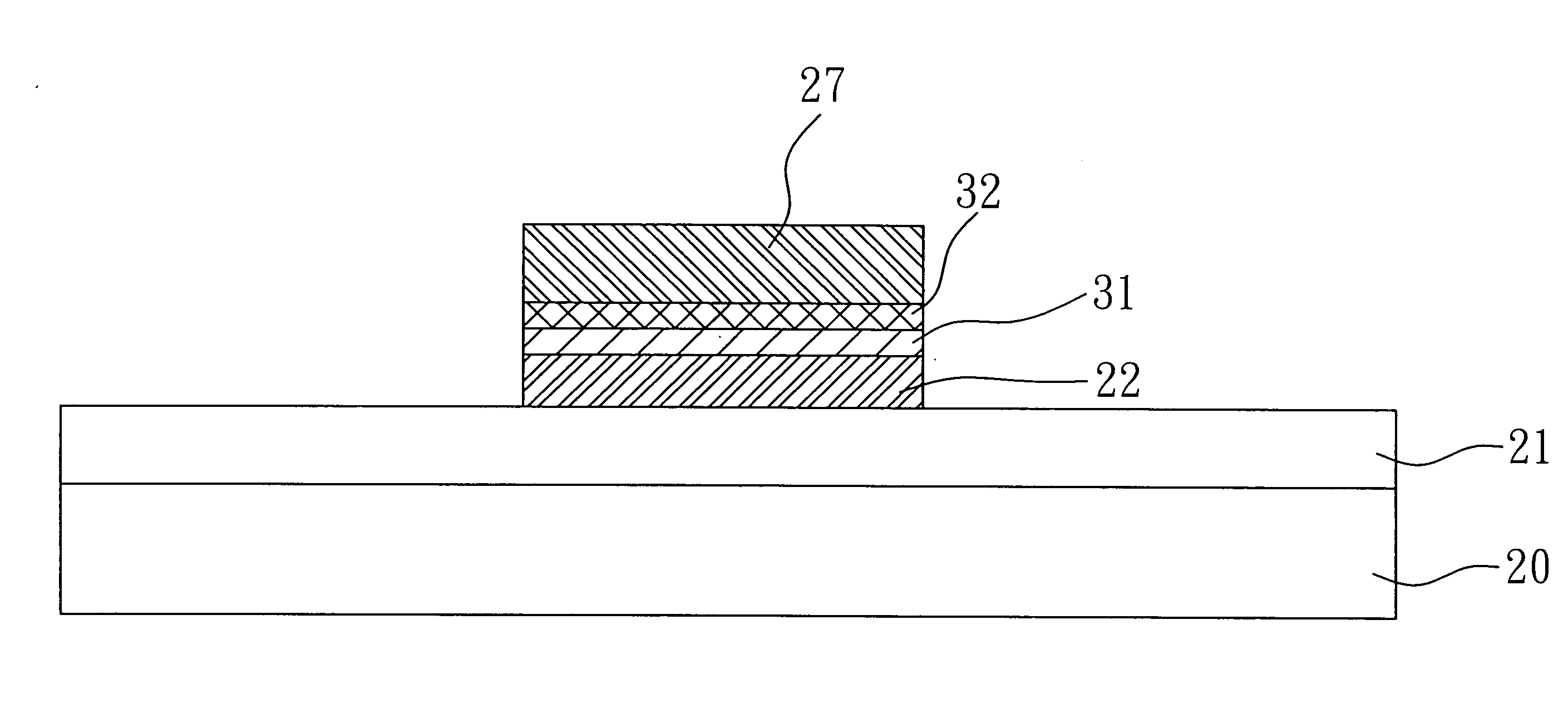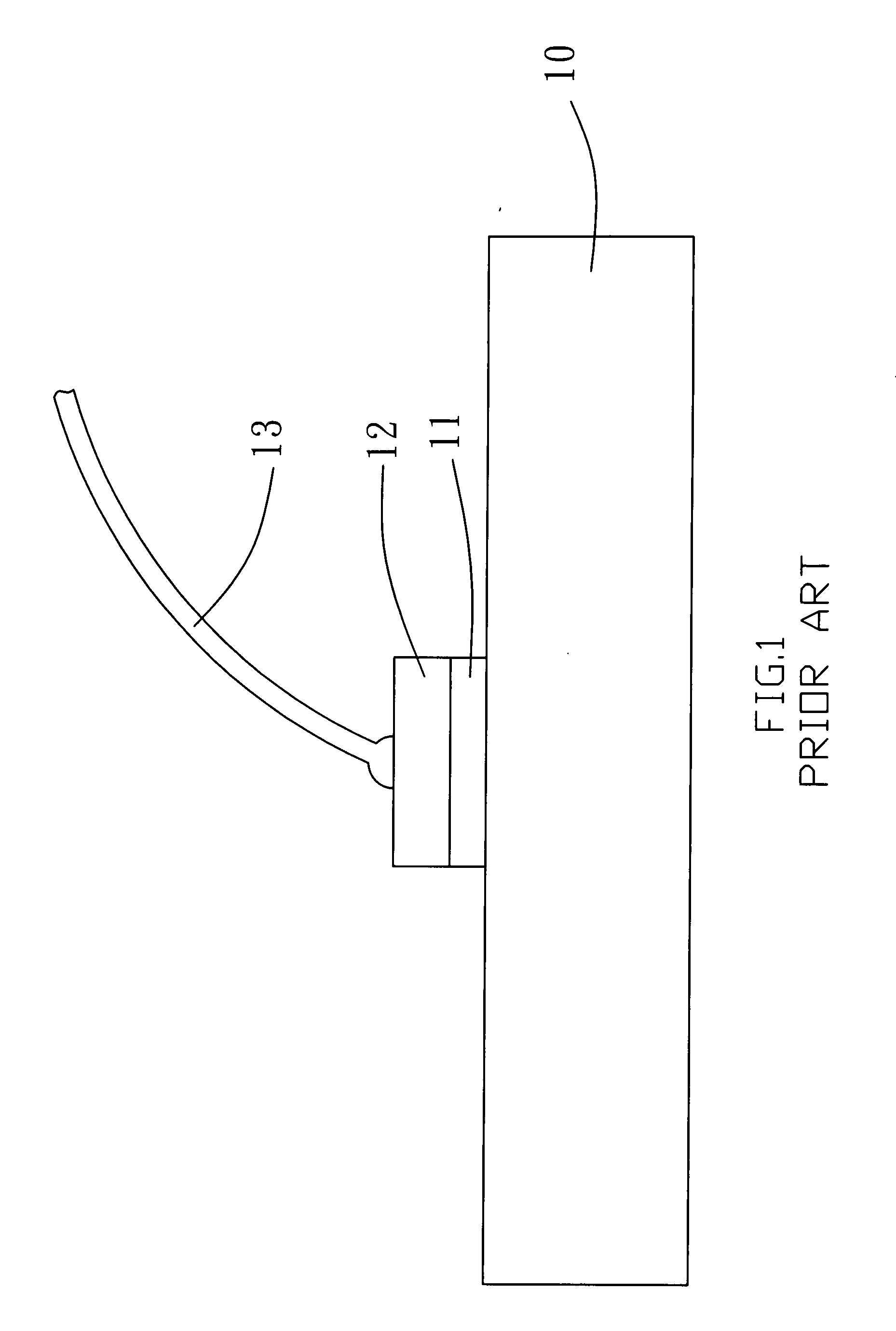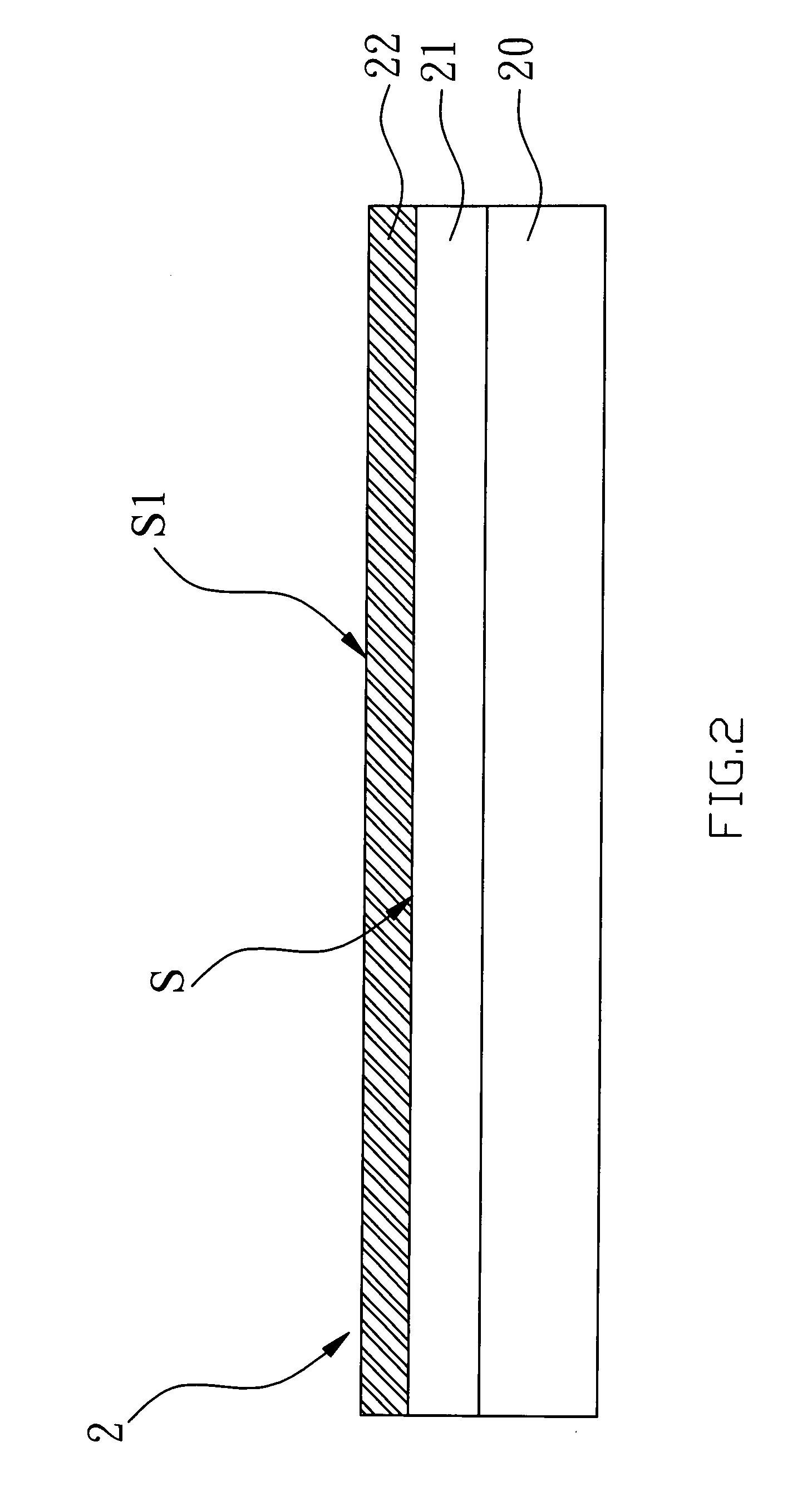LED epiwafer pad manufacturing process & new construction thereof
a manufacturing process and epiwafer technology, applied in the direction of basic electric elements, electrical equipment, semiconductor devices, etc., can solve the problems of peeling problem, comparatively higher production cost incurred in the evaporation process, poor efficiency of precious metal use, etc., to improve the roughness of the surface of the electroplated pad, improve the adhesion, and increase the interfacial bonding strength
- Summary
- Abstract
- Description
- Claims
- Application Information
AI Technical Summary
Benefits of technology
Problems solved by technology
Method used
Image
Examples
Embodiment Construction
[0040]It is to be noted that in the specification, similar elements are assigned with same number.
[0041]Referring to FIG. 2 for a first preferred embodiment of the present invention related to a manufacturing process of pad applied in an epiwafer LED; an epiwafer 2 including a substrate 20, an epitaxial layer 21 formed on the substrate 20, and a first metal layer 22 formed on a surface S of the epitaxial layer 21 is prepared.
[0042]Whereas organic contaminants may be attached to the surface of the first metal layer 22 during its transportation, storage in and leaving warehouse, a cleaning process is needed. To clean the first metal layer 22, a first surface S1 of the first metal layer 22 is first processed with a means to increase its interfacial bonding strength to increase its interfacial bonding strength needed in a subsequent wire bonding process. The means to increase the interfacial bonding strength relates to one to clean the surface in physical way (e.g., processed with plasm...
PUM
| Property | Measurement | Unit |
|---|---|---|
| temperature | aaaaa | aaaaa |
| interfacial bonding strength | aaaaa | aaaaa |
| surface area | aaaaa | aaaaa |
Abstract
Description
Claims
Application Information
 Login to View More
Login to View More - R&D
- Intellectual Property
- Life Sciences
- Materials
- Tech Scout
- Unparalleled Data Quality
- Higher Quality Content
- 60% Fewer Hallucinations
Browse by: Latest US Patents, China's latest patents, Technical Efficacy Thesaurus, Application Domain, Technology Topic, Popular Technical Reports.
© 2025 PatSnap. All rights reserved.Legal|Privacy policy|Modern Slavery Act Transparency Statement|Sitemap|About US| Contact US: help@patsnap.com



